With Garden tours still suspended we have invited our garden guides to share with you some of their stories, this piece has been written by Fiona Maguire.
We all enjoy a stroll in the Garden savouring its rich variety of plant life. Different plants catch our attention depending on season, light, temperature… our mood and interest on the day. We absorb the aesthetic of the living collection, and maybe we pause to orientate ourselves to the sculptures and their place in the garden, starting when we enter at the East Gate – eye-catching in shining hammered steel with rhododendron bud-trusses designed by Ben Tindall, and installed in 1995. There is variety in the sculptures around the gardens, some to look at, some to sit on, or to listen to… some are permanent and others, like the Giant Golden Monkey, currently hanging from Inverleith House, are visitors themselves. They all have a story to tell.
This is the story of the bronze artworks by Mo Farquharson in the Arid Lands Glasshouse, and it will hopefully tickle your interest to seek them all out when the glasshouses re-open. Most visitors will be familiar with the engaging little bronze frog beside the walkway, which appeals to the child in all of us, with its puddle of water sploshing onto the path.
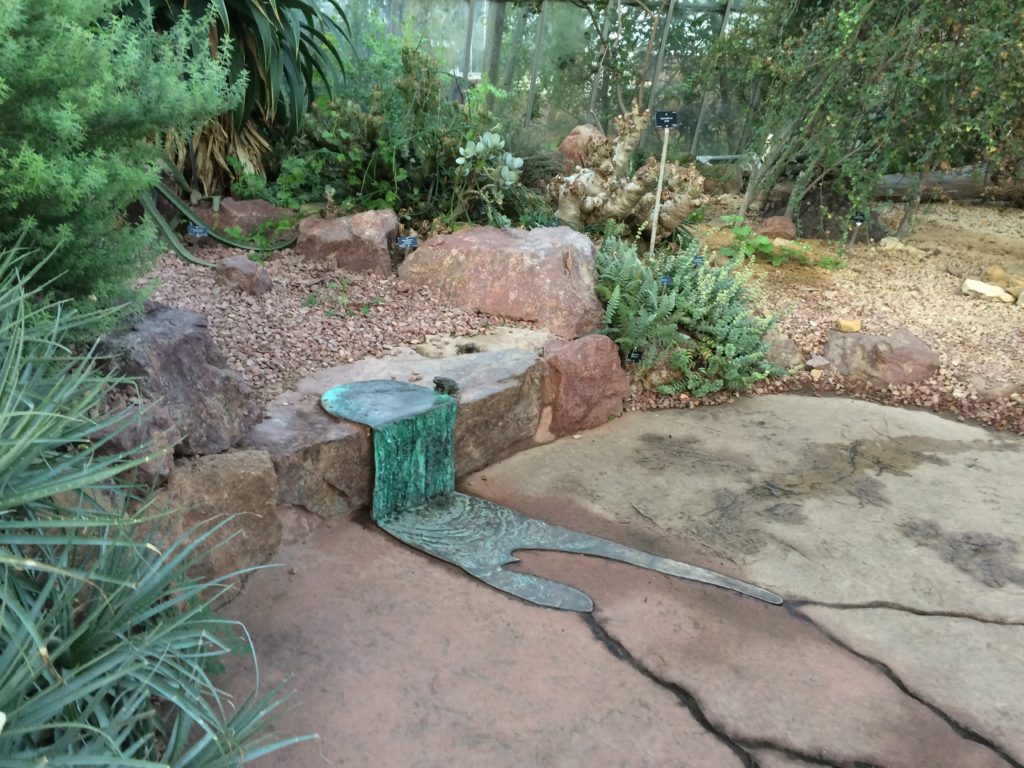
But have you noticed the other little bronzes lurking among, or just above, the plants?
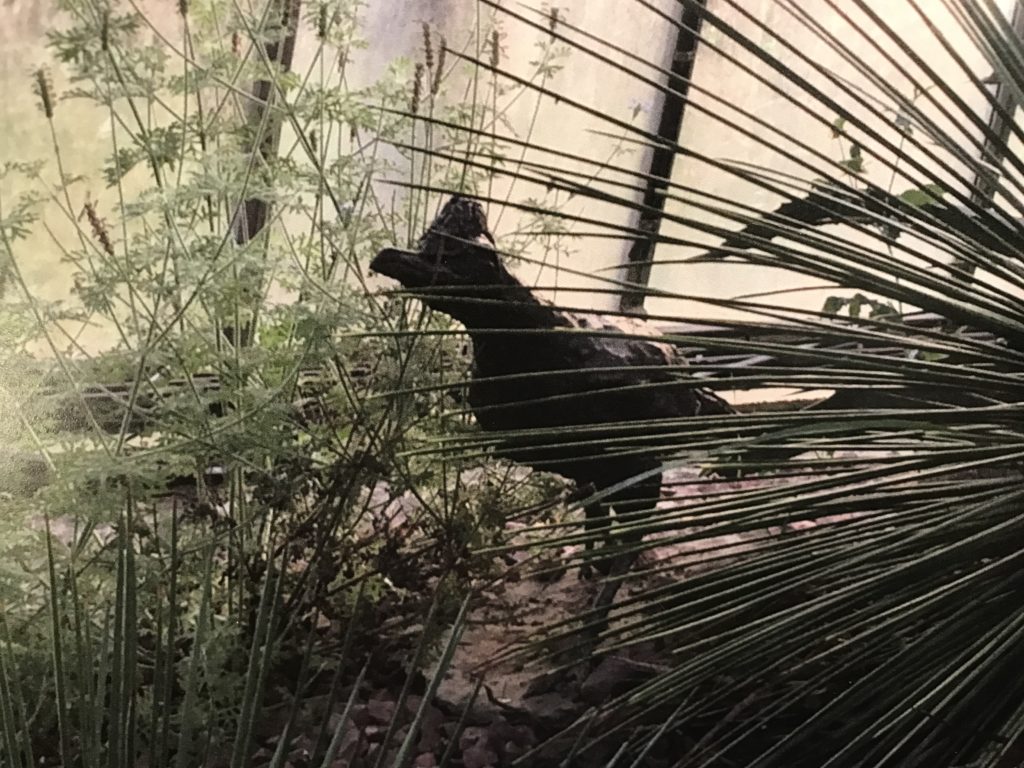
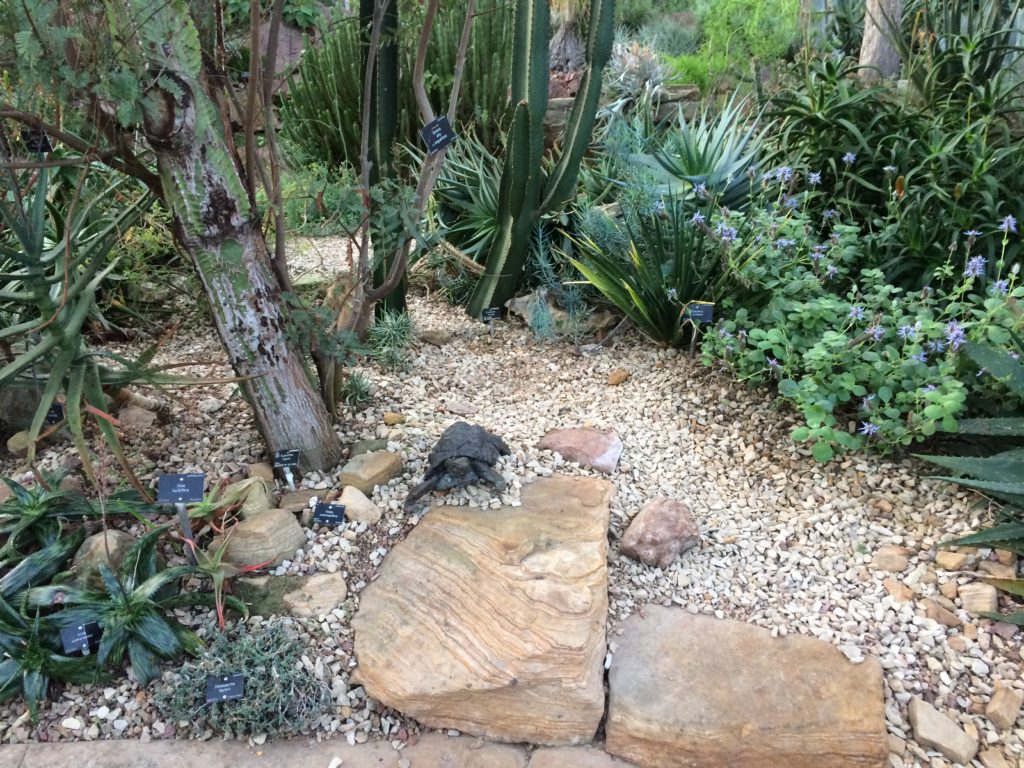
These creations by Mo Farquharson (1953-2018) were commissioned by RBGE, and installed in 1998. They all represent life that thrives in different arid lands, and form part of the ecology of these areas. Here in the glasshouse and, surrounded by plants which have evolved to cope with the stresses of the environment, she offers glimpses of the connection between the animal kingdom, where life can, and must, be always on the move, and the plant kingdom, where life evolves in situ. Mo’s work reflects her inspiration: ‘Tension, speed, pathos, mood are things that fascinate me. I aim to capture relationships and attitudes of people and animals with others and their environment’.
Mo was raised in Aberdeenshire, and initially studied in Edinburgh, then Oxford and Boston. She became an elected member of the Royal Society of British Sculptors in 1995. She exhibited widely throughout the UK and the Channel Islands, with prestigious private and public commissions in the UK and Germany. Mo’s sensitivity, combined with her technical competence, resulted in a remarkable output. Many pieces are small scale depictions of urban life, such as ‘Queue’ with each individual’s attitude and preoccupation revealed, but detached from the others, as in modern city life.
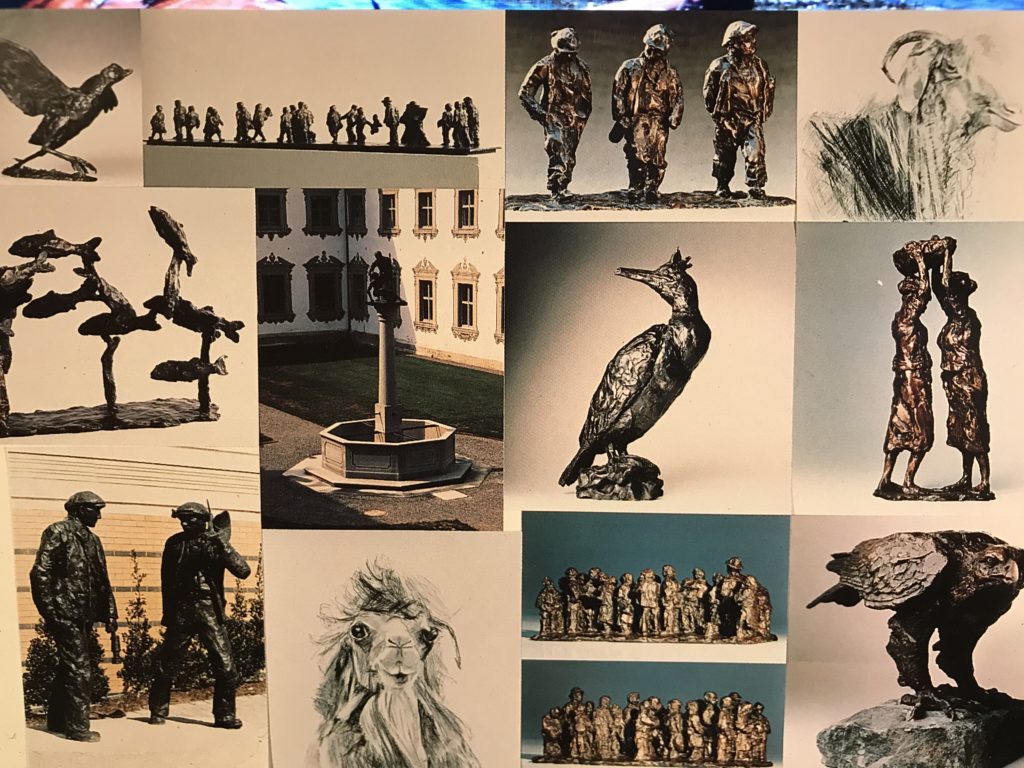
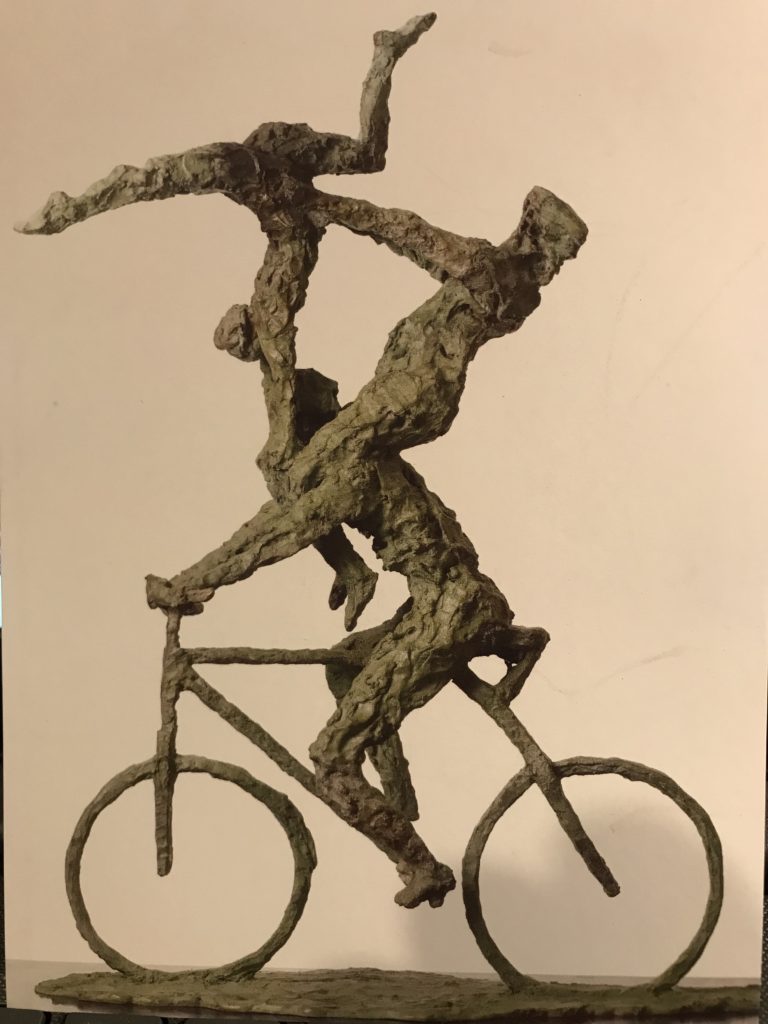
Other pieces are witty and show playful human moments
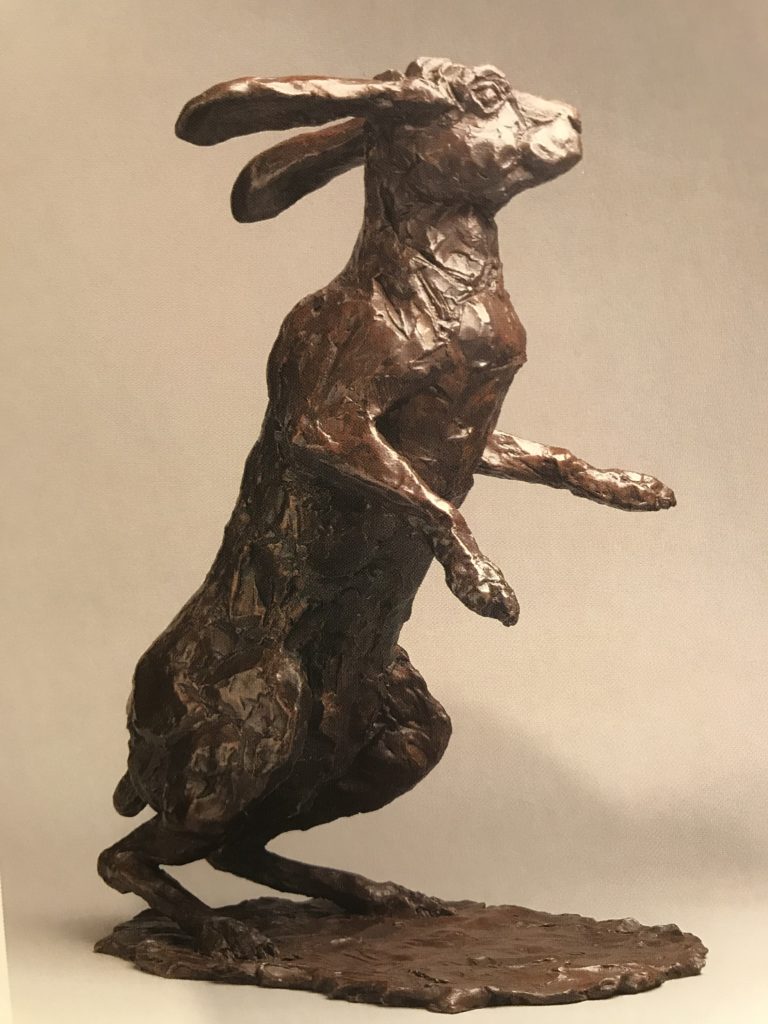
A particularly moving commission, ‘The Miners’, 1995, can be seen at Brandon Gate, Hamilton, Lanarkshire. The life-size statue of two miners is a tribute to the 87 victims of the Udston Colliery explosion of 1887, the second worst disaster in Scottish mining history. A very different large work is a 4 foot bronze statue of John Lennon, commissioned by HMV, for charity for the Silver Clef Awards in 1997
